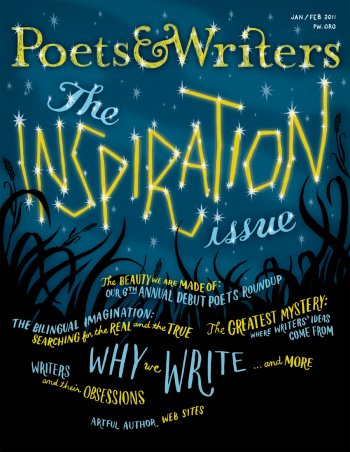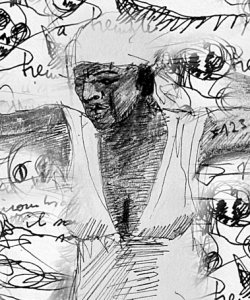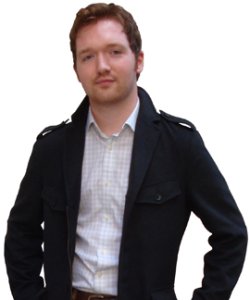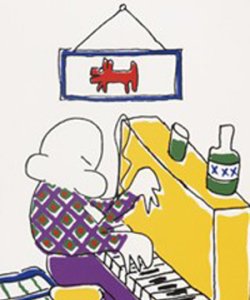
A special section on inspiration—the unpredictable engine of ideas inside every creative writer—including our sixth annual debut poets roundup; plus, the bilingual imagination; why we write; artful author Web sites; and more.
Jump to navigation Skip to content

A special section on inspiration—the unpredictable engine of ideas inside every creative writer—including our sixth annual debut poets roundup; plus, the bilingual imagination; why we write; artful author Web sites; and more.
From a novelist sparked by theoretical science to a poet investigating sound and silence, five writers share the obsessions that fuel their work.
Whether it’s from random conversations, direct observation, life experience, or historical research, writers find inspiration in myriad places. Gregory Orr, Marilyn Chin, Walter Kirn, Charles Baxter, and others weigh in on the subject.
It can take years to write a good book, and possibly longer to find a publisher. Twelve newly published poets share the stories of their books, sources of inspiration, and advice for writers on the verge.

Haiti Noir, a collection of stories edited by Haitian American writer Edwidge Danticat, is one of the latest in Akashic Books’ series of noir fiction anthologies from around the world.
In the past year several new electronic-submission systems have emerged, among them Submishmash, Green Submissions, and Tell It Slant, enabling journal editors to manage writer's work more efficiently.
With so many good books being published every month, some literary titles worth exploring can get lost in the stacks. Page One offers the first lines of a dozen recently released books, including Maxine Hong Kingston's I Love a Broad Margin to My Life and Michael McClure's Of Indigo and Saffron, as the starting point for a closer look at these new and noteworthy titles.
Literary journals learn to sidestep old-school printing, distribution, and marketing costs by leveraging new media and social-networking platforms.
Small Press Points highlights the happenings of the small press players. This issue features Solid Objects, the New York City–based independent press that publishes "short, self-contained works that might not otherwise find their way into book form because of their length."
Literary MagNet chronicles the start-ups and closures, successes and failures, anniversaries and accolades, changes of editorship and special issues—in short, the news and trends—of literary magazines in America. This issue's MagNet features ZYZZYVA, Cave Wall, Annalemma, H.O.W. Journal, Assembly, and the Whitefish Review.

A day after he finalized the last of his illustrations for our January/February 2011 issue, Jim Tierney, an illustrator and designer at Penguin, spoke about the inspiration behind his work.

A pen-and-ink drawing and a typewritten letter by Charles Bukowski are two pieces among the documents and ephemera currently on view in Charles Bukowski: Poet on the Edge at the Huntington Library in San Marino, California.
One writer successfully landed a book contract by amping up the online launch of her self-published memoir.
When it comes to author Web sites, designer Jefferson Rabb is the business, and has made a name for himself by capturing in pixels the unique spirit of a writer's work.
The editors of Agriculture Reader offer tips for submitting to their artist-designed, hand-crafted journal.
Awaiting the hard-won publication of her first novel, one author makes a case for detaching from expectations and focusing on the gritty work of writing.
Fiction writer Ana Menéndez’s early education in two languages—Spanish and English—became a wedge that opened her world to possibility, difference, and change.